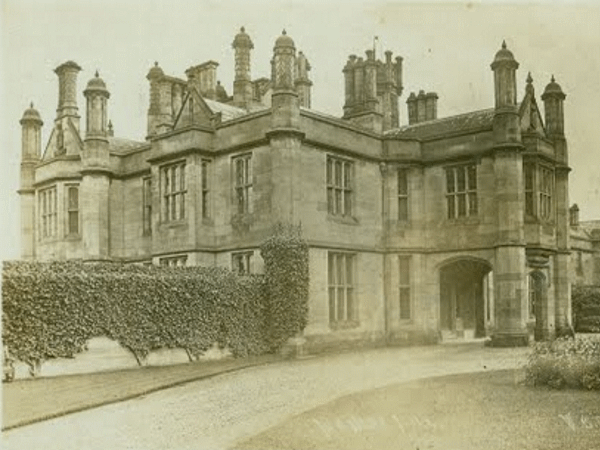(as recorded by Keith Jordan, August 2022)
In 2013, I completed my research into ‘Manley Hall & the Manley Family’, which can be accessed via the Group’s website under the heading of Original Research. Chapter 15 dealt with the period during which Manley Hall became a Preparatory School for Boys, under the direction of the Reverend William Canner.
Recently, I received correspondence from Philip Swift, a former pupil at the school who had read my article. His memories proved to be most enlightening and informative.
Included below, are some insights into the school itself and the teachers and boys who worked and lived there at the time.
THE SCHOOL
The boys who attended the school were all boarders and they were drawn from Birmingham, Sutton Coldfield, Cannock and farms in the area.
The pupils were divided into three classes or houses. Philip attended the school in the 1950’s. His younger brother was also a pupil when the Reverend Canner died on the 16th March 1958, aged 75. As a mark of respect, the boys were all sent home and not too long afterwards the school closed.
The Reverend Canner’s wife must have died at an earlier date, as Philip remembered that:-
“We were expected to be very quiet on the anniversary of her death.”
He also stated:-
“The Headmaster’s birthday was always celebrated with a paper chase and games with ‘dummy’ rifles, followed by a special tea.”
“There were dormitory feasts and the cane for the simplest misdemeanour.”
Philip cycled over to the school around 1961, accompanied by a friend, who also happened to be a fellow pupil. The building was all locked and secured but they managed to gain access via a cellar grating! In the basement they found that the wine cellar, which had always been kept locked, had been smashed open with an axe. There was no trace of any wine, just the faint imprint of bottles in the sandy floor.
They did not venture to explore further as they noticed floorboards were missing upstairs and discretion proved to be the better part of valour. He made a return visit by car a few years later and found that a small stone plaque had been set into the ground to mark the spot where the building had previously stood.
Philip said he often wondered what happened to all the paintings and artefacts in the property. There were several oil paintings and portraits in the Dining Room, hundreds of rare books in the Library and a collection of butterflies and various other items of interest in the Entrance Lobby.
THE BOYS
With regards to the drawings of the layout of the school used in my research, Philip stated:-
“These were almost certainly sketched by Marsh. He came to school with a roll of plain wallpaper and by the end of term it would have been filled with drawings of various buildings in the streets of Birmingham.”
Other names recalled by Philip was Morgan, the Head boy at the time, Holt, Bott, Gorman, Spencer of Day’s Shoes, Birmingham, Ellery, Marsh, Fosbrooke, Pollock and Carver.
Bryan Ellery subsequently went to Wells in Somerset and became a celebrated sculptor. Philip also was in contact for a while with another former pupil who became a music composer living in Berlin, but he has since lost touch.
THE FOOD
On the subject of food provided for the pupils, Philip stated:-
“There was always porridge for breakfast and the boys each had their own tins of ‘Golden Syrup’, which were kept on the sideboard. Lunch often took the form of a stew and there was always lots of bread and jam for tea.”
THE TEACHERS
Philip mentioned that the Reverend Canner taught History and the lesson always commenced with a test on ‘dates’. He also taught English.
The Gym Master, he thought, was a Mr Hardy. At some point in time Philip and another boy named Spencer had an altercation and Mr Hardy said they should settle matters in the ring!
The piano teacher, Miss Treadgold, was also remembered, but Philip mentioned that:-
“He never progressed beyond ‘Fur Elise’, which he can still play.”
There was a lady cook and also a man servant named Fred Bartlett.
Hugh Murray-Richards seemed to be the most memorable character and Philip’s description of this teacher included the following:-
“Hugh Murray-Richards taught mainly Latin. We read books and learnt verbs and we were then tested individually ‘at the front’ by translating Latin into English and vice versa. He had a missing lower front tooth which he replaced with a matchstick. This was to hold his pipe, which he filled with ’Condor’ tobacco and smoked in class. If he shouted at a pupil, often his matchstick would fly out!
He would hit out if he thought we deserved it, told jokes and taught us how to play cards.
He took us on crocodile walks to various venues. One popular one was to the church at Weeford, where we were shown the stained glass window which, I believe, was brought over from France. He played the organ and took us to a shop for sweets etc.”
Philip had some exchanges with pupils at the next school Hugh Murray-Richards went to and elicited further information about him:-
“They said he was an ardent protester of Dr. Beeching’s railway cuts. He had served in the Merchant Navy and came from Manchester, where his Mother had property.”
Keith Jordan
(Based upon memories of Philip Swift)
August 2022
